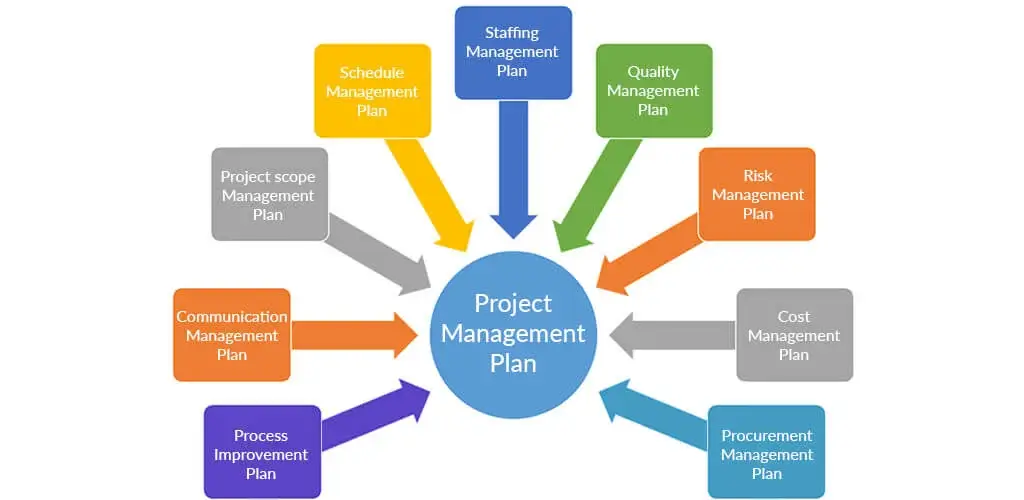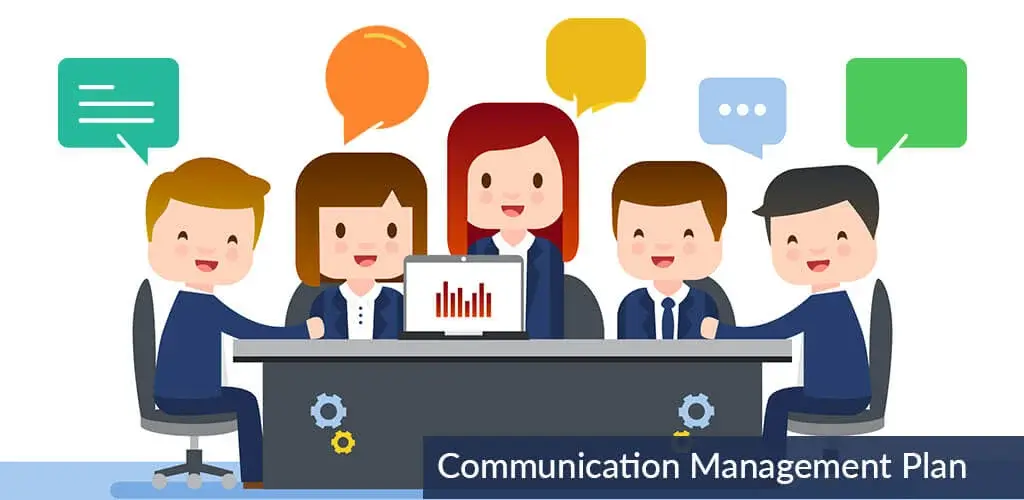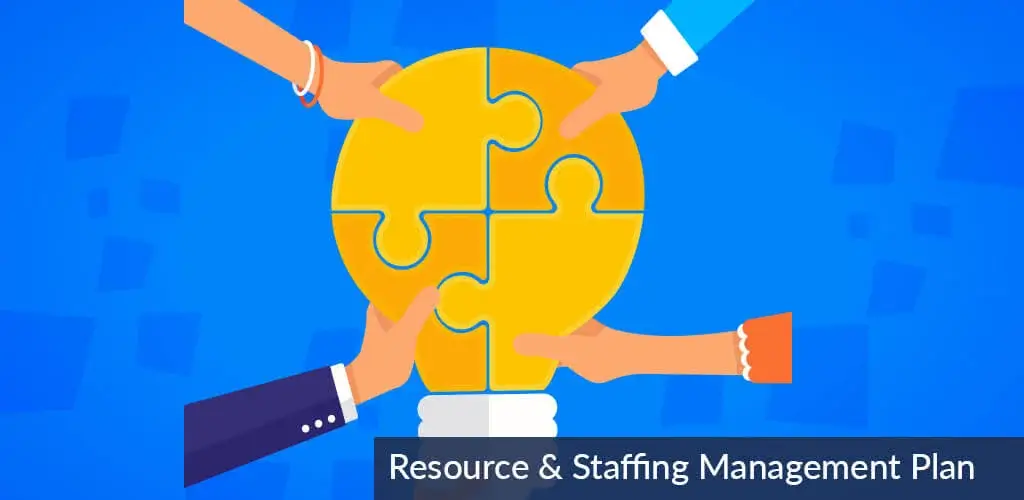Limited Time Offer: Full Feature Access. Plans start @$13 for 11 users Get Started Now
Limited Time Offer: Full Feature Access. Plans start @$13 for 11 users Get Started Now
Explore and understand the most crucial phase of the Project Management Lifecycle in this chapter - Project Planning. Planning in any endeavor is an extensive exercise.
Project Planning results in lots and lots of plan and when all these individual plan come together, you see the grandiose image of your end objective.
This master plan shows you the glimpse of your product or service once all your plans are executed in letter and spirit.
In very simple terms, by the end of the Project Planning phase you come to know
Thus essentially the single most important output of Project Planning is – "Project Management Plan".

Project Management Plan consists of multiple other plans that cover your stakeholders, requirements, scope, deliverables, resources, staffing, vendors and procurement, quality, costs and risks etc. A project management plan would majorly consist of:

"if you do not know where you are going you neither know how to get there nor even when you have arrived!"
The Project Plan is the living document of your project. It is your "single source of truth" as it has everything that the project is about!
All project participants, contributors, impacted parties etc. are listed in the project management plan. It is the guiding light if you may that steers your project through execution, implementation, monitoring, governance & control.
It is the bible that houses each and every change, amendment made to the project through execution along with the entire scope, schedule and associated costs.
Note:-The Project Manager is the author of the Project Management plan and he takes inputs from the project charter, business case in consultation with the subject matter experts (SMEs), project teams, stakeholders, sponsors and senior leaders as applicable.
As the Planning phase progresses the Project Manager is required to
Nevertheless, getting each and every vital info recorded, reviewed and shared is a tiring job and the project success is hugely dependent on the Planning phase. A poorly drafted project management plan is the sure shot recipe for absolute failure.
And it is pretty evident that matured organizations spend a huge amount of time and efforts to ensure they have a solid plan before they begin execution.
Communication if well managed can work wonders for you and your team. It is always recommended that you set some ground rules around project activity communication.
Everyone in the team MUST know the “authorized” recipients of the information along with the expected timelines and intervals for every project communication.

For any communication plan to be effective it must
We must also keep in mind that “one size fits all” should never be applied when project communication is involved. E.g. project sponsor is not interested in the number of lines of codes written so far
Also, make sure that your Communication Plan clearly indicates any assumptions and constraints taken into account. And we must update the plan as when these constraints are removed and assumptions clarified.
Not only that, project teams are better prepared when real time project progress and status are shared and reviewed. Timely corrective measures and informed decisions can be taken in the best interest of the project and guide it to success.
We all know that project is an endeavor that must have a definite start and end. Thus it entails that each and every task required to complete the project must therefore have defined state and end too.
Schedule Management Plan (SMP) includes the list of activities that will be performed during the course of the project by specified resources within timelines.

The SMP provides clarity in terms of what needs to be done, by whom and when. It is understood that having an exact schedule is not possible but a broader view to available resources, time required to complete activities are taken for form a general baseline and schedule.
There are various mechanisms and techniques used across organizations to define and maintain project schedule and the most widely used ones are Gantt Charts and Critical Path Method (CPM).
Developing the Project Schedule is the worst nightmare a project manager can have. Estimating the "right" time requirement for each activity is critical. One need to pay attention to every tiny detail involved to make as accurate an estimation possible.
If you allocate very tight timelines then you have a team working under a lot of stress and pressure leading to quality loss. It’s a given because of the simple fact that – Focus shifts from getting the task over than getting it done with quality.
Similarly if you are too lax and add an unreasonable buffer the entire project budget is skewed. So either ways the Project Manager is between a hard surface and a rock!
But rest assured that if the above three factors are well accounted for in the Schedule Management Plan, you are off to a good start to an On time & within budget project delivery without compromising on the quality.
Resources are the back bone of all organizations as successful delivery of the strategic initiatives rest on their shoulders. Resourcing and Staffing if not done adequately will result in utter chaos not only in the project but for the entire organization as a whole.

While engaged in building your Staffing Plan one must have absolute clarity of the
Having clarity of the above aspects will help devise a robust plan that will ensure you get the right resources for the desired duration. All pertinent questions from the Sponsors or Stakeholders can better answered to allay fears around the resourcing costs and time.
Note:- Executive buy-in is very critical for getting the resource approvals and preventing any mid-way pull leading to project collapse.
Moving on, we must also realize that resources include equipment, materials, infrastructure as well as the obvious human resources. Hence accounting for their right quantity, duration and quality is directly linked to the project success.

As a project manager, one must also be adept in answering "What’s in it for me - (WIIFM)" It is important for enhancing resource motivation and productivity. Also, projects must aim for skill enrichment of the organization as a whole by training their project resources.
A very through Training Plan must also be included in your Staffing Plan with clearly outlined training programs, training duration, identified resources, training vendors, and costs.
With a robust Resourcing Plan, organizations benefit by having low resource churn, increased knowledge & skills development, motivation and enhanced teamwork.
All projects have costs associated with them and are expected to be delivered within the approved budget. Usually a financial management plan would include cost budgeting, cost control, monitoring and reporting.
It is often seen that Organizations follow a Top-down or a Bottoms-Up approach for allocating project budgets.

In the Top-down approach the budget or available fund is known and you need to complete the project within this allocated cost.
Whereas in the Bottoms-up approach you begin by estimating cost for each module or activity required for project completion and then add them up to reach the final cost. Though more accurate this approach may lead to cost over-runs.
Once you begin with the cost estimation and planning it is best to start with the core costs such as
One of the key project goals is also to deliver within budget and ensure profitability. Cost control and monitoring become crucial here. It is always advisable to breakdown your project budget in time bound phases. This way you know the cost required for each phase, the duration for which the cost will be required & utilized.
A major benefit here is if there are new requests or scope creep you can re-estimate the costs to see if the new work can be covered within the existing allocation. If not, you go back to the customer/sponsor with a change request for additional funds.
Effective Time Management leads to easier cost control. It is in the best interest of the project to meet deadlines and deliver milestones as per plan. The better your time management, better is the cost control.
In the end timely reporting of cost variances and changes also helps maintain the project’s financial well-being. A periodic planned vs. actual expenditure report goes a long way in proper expense tracking and management.
You are always in the know of your project expenses and can prevent leakages in terms of equipment, material etc. overruns.
There are quite a few financial reports that we will review in the upcoming modules. And we will explore Risk Management and Quality Management in the next chapter.